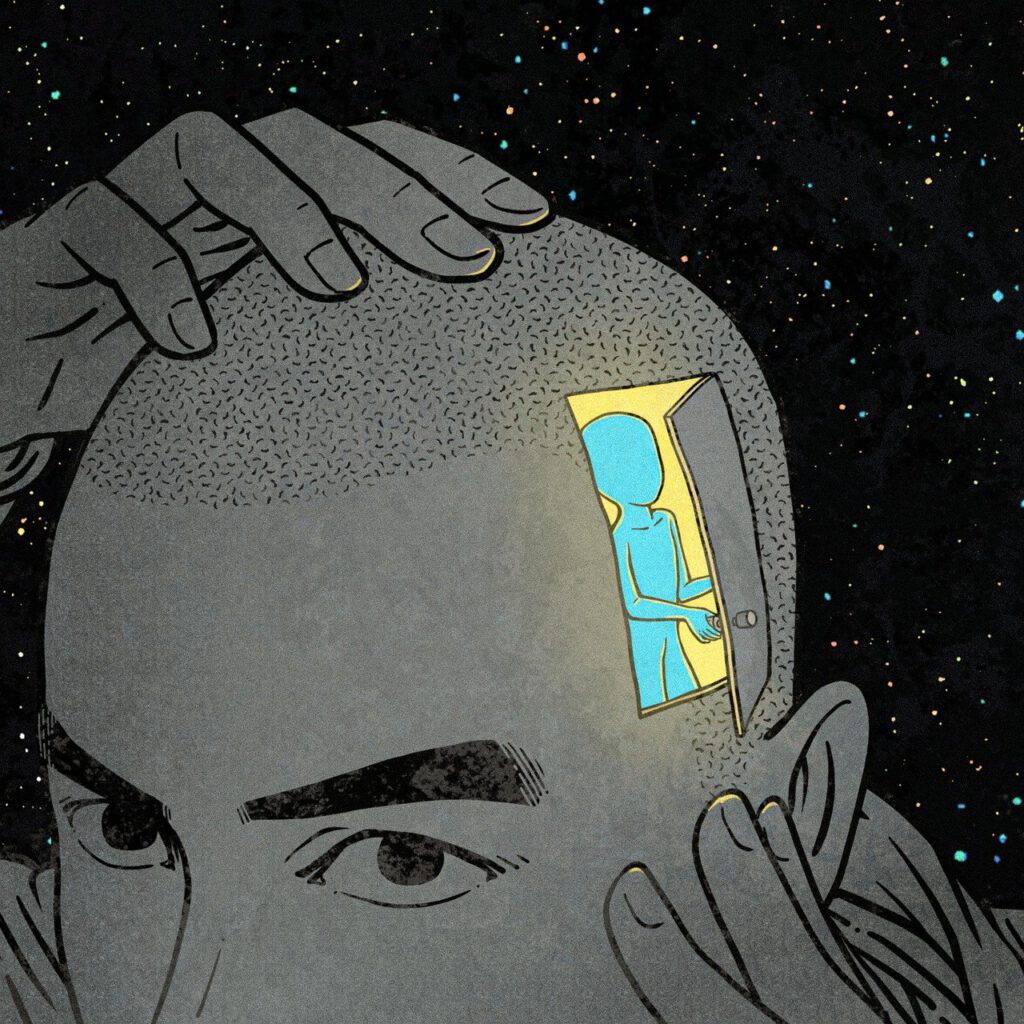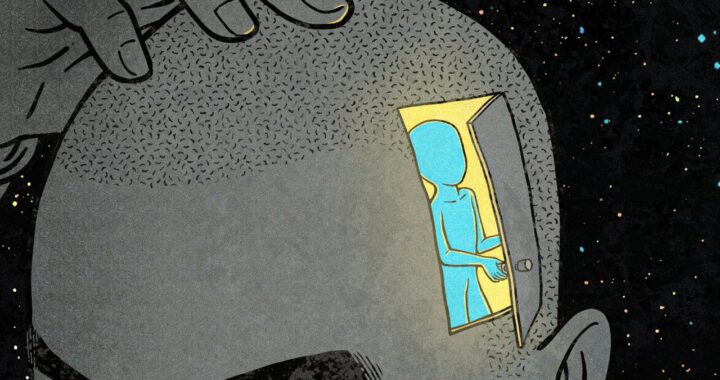Information about daydreaming
We all see our mind wandering off from time to time. But what if we catch ourselves zoning out for hours everyday and/or it interferes with our work or social life? In this page we will give you information about daydreaming and what effects it can have, positive and negative.
Mind wandering vs daydreaming
When you let your mind wander you unconsciously lose focus on the task they were doing (Esterman et al.,2012). Your attention will often be drawn to more everyday fantasies, such as a vacation or what you are going to eat tonight. The most important difference with daydreaming is that mind wandering happens unconsciously; we don’t notice it happening until we are already losing our focus on a task. Daydreaming on the other hand requires an intentional shift of attention(Somerclinic, 2020). The subject of a daydream can range from everyday fantasies to complete stories made by the daydreamer. Some people have the ability to daydream with vivid and narrative fantasies. This is described as immersive daydreaming.
Maladaptive daydreaming vs immersive daydreaming
Immersive daydreaming has many benefits, like increasing emotion regulation and creativity (West & Somer, 2019). However, immersive daydreaming can becomes maladaptive. Maladaptive means that the daydreaming does not adapt to your needs at the present moment. The daydreaming starts to replace human interaction and interaction and/or interferes with work or studying (Somer, 2002). The purpose of daydreaming has become avoiding stress and pain by improving one’s own mood and through wish-fulfilling fantasies. Do you feel like daydreaming is standing in the way of your productivity and social life? There are ways to lessen the need to daydream.
Maladaptive daydreaming?
Maladpative daydreaming is a disorder first named by trauma psychologist Eli Somer in 2002 (Maladaptive daydreaming center, 2021). He saw that daydreaming was used as a coping mechanism that can lead to excessive and maladaptive use. He beliefs that maladaptive daydreaming has always existed but never before defined. Because of this many people who he talked to with the disorder thought they were the only ones experiencing it and some of them were likely even misdiagnosed. Even though the disorder is not officially recognized as a diagnosable disorder (American Psychiatric Association, 2013), the word disorder is often associated with maladaptive daydreaming because the daydreaming can cause distress and/or dysfunction.


I think I daydream too much but my daydreams aren’t that vivid.
It is possible to daydream maladaptively without having very vivid and narrative daydreams. In these instances people daydream in a way that interferes with their work or social life without the daydreams being vivid or complex. This however is more the exception than the norm when it comes to maladaptive daydreaming.
I want to daydream less, now what?
Even though there is no official treatment, research has shown that mindfulness and exposure methods can reduce someone’s need to daydream(Soffer-Dudek & Somer, 2018). This website aims to give people who want it helpful tools to reduce their need to daydream: mindfulness exercises and gratitude journaling. To know more about these methods or to try them yourself, feel free click on the following links.
Do you want to know more about maladaptive daydreaming or do you want hear personal MD stories? Feel free to visit the website Maladaptive Daydreamers, by Jayne Rachel: https://maladaptivedaydreamers.com/
Sources:
American Psychiatric Association. (2013). Diagnostic and statistical manual of mental disorders (5de druk.). Washington, DC.
Esterman, M., Noonan, S., Rosenberg, M., & DeGutis, J. (2012). In the zone or zoning out? Tracking behavioral and neural fluctuations during sustained attention. Cerebral Cortex, 23(11), 2712–2723. Geraadpleegd op 6 september 2023, van https://doi.org/10.1093/cercor/bhs261
Maladaptive daydreaming center. (2021, 3 februari). Interview with Eli Somer. Geraadpleegd op 27 september 2023, van https://maladaptivedaydreamingcenter.org/2021/02/03/interview-with-eli-somer/
Soffer-Dudek, N., & Somer, E. (2018). Trapped in a daydream: Daily elevations in maladaptive daydreaming are associated with daily psychopathological symptoms. Frontiers in Psychiatry, 9, 194. Geraadpleegd op 12 september 2023, van https://doi.org/10.3389/fpsyt.2018.00194
Somerclinic. (2020, 14 juli). Immersive and maladaptive daydreaming [Video]. Youtube. Geraadpeegd op 27 september 2023, van https://www.youtube.com/watch?v=loE6Cq8lUS4&t=470s
Somer, E. (2002). Maladaptive Daydreaming: A Qualitative Inquiry. Journal of Contemporary Psychotherapy, 32(2):197-212. Geraadpleegd op 6 september 2023, van https://doi.org/10.1023/A:1020597026919
West, M. J., & Somer, E. (2019). Empathy, emotion regulation, and creativity in immersive and maladaptive daydreaming. Imagination, Cognition and Personality, 39(4), 358–373. https://doi.org/10.1177/0276236619864277

